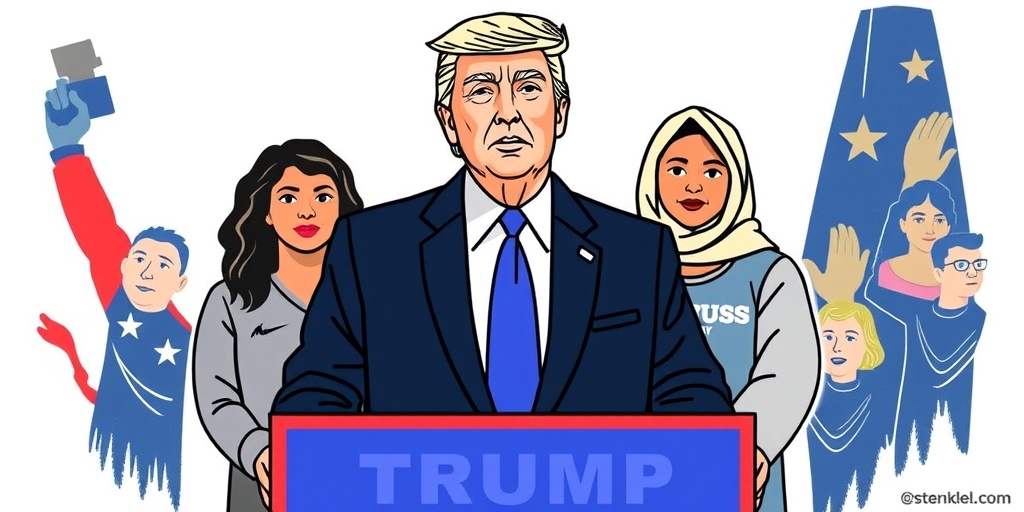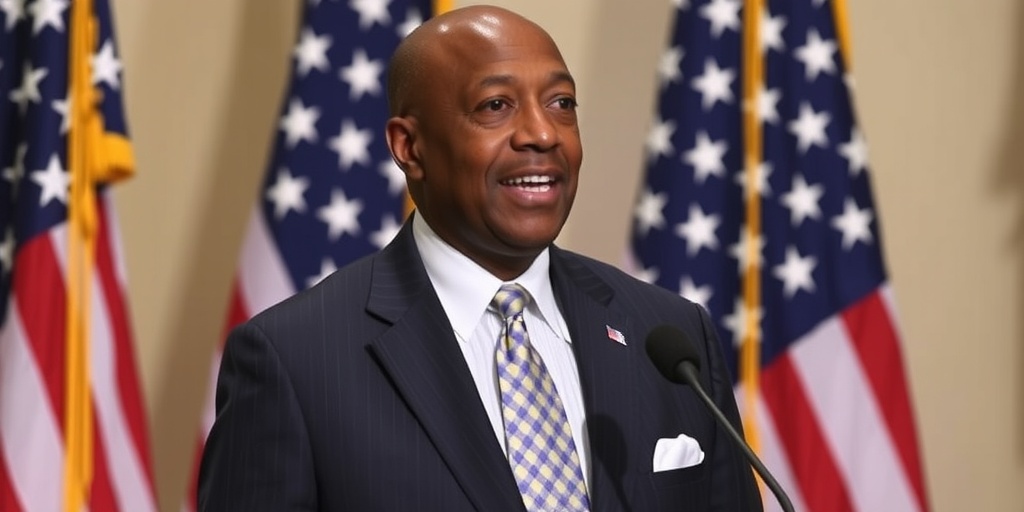Now Reading: Democrats Don Pink for Protest
-
01
Democrats Don Pink for Protest
Democrats Don Pink for Protest

Title: Democratic Congresswomen Embrace Pink as Symbol of Resistance During Trump’s Address
During President Trump’s recent address to a joint session of Congress, approximately thirty Democratic women legislators made a bold statement by wearing various shades of pink, a departure from the solid-colored suits often favored in political circles. This vibrant display of color was intended to convey a message of opposition and resilience amid the political climate described by many as more extreme than ever.
As the President delivered his speech within the traditionally somber setting of the House chamber, the bright pink clothing worn by these congresswomen stood out dramatically against the backdrop of dark suits. From hot pink to shell pink, the outfits varied significantly, showcasing styles that included pink jackets, skirts, and even pink ties worn by some male colleagues. Notably, House Speaker Nancy Pelosi sported a striking pink pantsuit. Representative Jill Tokuda from Hawaii flaunted a bubble-gum pink blazer adorned with the phrase “We the People” on her lapels, while Representative Teresa Leger Fernandez of New Mexico, chair of the Democratic Women’s Caucus, chose a raspberry jacket paired with cotton candy-colored palazzo pants.
Representative Fernandez explained the reason behind their choice of color. "We decided to use a strong color because what’s happening now is more extreme than ever," she stated, alluding to Trump’s controversial policies and executive actions affecting women’s health care amidst a variety of other issues. Describing pink as a symbol of “women’s power, persistence, and resistance,” she highlighted its significance in their unified display against the administration.
Historically, pink has been associated with numerous cultural stereotypes that have marginalized women and the LGBTQ+ community. The term “pink collar jobs,” used in the 1970s, referred to occupations such as secretarial, nursing, and cleaning roles, which were predominantly filled by women. Similarly, the phrase “pink ghetto” described low-paid female laborers. Yet, figures like fashion designer Elsa Schiaparelli reclaimed pink as “shocking” and “Barbie” made it a feminist emblem in popular culture.
Recent references to pink also recall the 2017 Women’s March, where many activists donned knitted “pussy hats” as a form of protest against the new administration. While those hats have faded from the national conversation, the congresswomen’s choice to wear pink during the address represents an effort to reclaim the color as an emblem of resistance. Their outfits stood in stark contrast to the more muted tones worn by Melania Trump, who chose a grey Dior suit, and Ivanka Trump, dressed in a black Oscar de la Renta ensemble. Additionally, Usha Vance’s blush-colored trouser suit from the California-based label The Sei added another layer of complexity to the evening’s color palette.
The choice of pink was not merely decorative; it served as a form of silent protest. While some lawmakers opted for different colors to express specific political messages—such as Representative Bill Foster from Illinois, who wore a yellow and blue striped tie as a nod to support for Ukraine—the prominent display of pink became a beacon of solidarity among Democratic women. It’s a manifestation of both progress and potential pitfalls, embodying a vibrant stand against perceived injustices while also risking the image of being superficial.
The congresswomen asserted that wearing striking colors such as pink allowed them to register their dissent visually, as Fernandez pointed out, "Mr. Trump may have the microphone, but with color, right in front of him, we could register our protest.” However, it’s essential to note that their dissent was not confined to fashion. Many legislators also brought guests affected by Trump’s policies, amplifying their message with paddles reading phrases like “Musk Steals,” “Lies,” and “Save Medicaid.”
The impact of clothing choices at such high-profile occasions, particularly the joint address, cannot be understated. Trump is acutely aware of how attire can convey power and emotion. Recent events, such as his sarcastic remarks to Ukrainian President Volodymyr Zelensky regarding his military-style clothing, underscore a keen awareness of the symbolic nature of dress.
Over the years of Trump’s presidency, attire has transformed into a form of protest; this was evident in previous addresses where female lawmakers donned white suits, black outfits for the #MeToo movement, and various color themes to signify dissent. As the current political landscape intensifies, the visual signifiers of these “battles” have only become more pronounced, suggesting that appearances will continue to play an integral role in political discourse—a trend likely to evolve as the election season heats up.
In summary, the Democratic Congresswomen’s embrace of pink during Trump’s address symbolizes a reclamation of color as a form of protest and empowerment. While the effectiveness of such statements may be debated, the clear message of resilience amidst political turmoil resonated throughout the evening, challenging traditional notions of how political attire can influence public perception and highlight dissent.
Stay Informed With the Latest & Most Important News
Previous Post
Next Post
-
 01New technology breakthrough has everyone talking right now
01New technology breakthrough has everyone talking right now -
 02Unbelievable life hack everyone needs to try today
02Unbelievable life hack everyone needs to try today -
 03Fascinating discovery found buried deep beneath the ocean
03Fascinating discovery found buried deep beneath the ocean -
 04Man invents genius device that solves everyday problems
04Man invents genius device that solves everyday problems -
 05Shocking discovery that changes what we know forever
05Shocking discovery that changes what we know forever -
 06Internet goes wild over celebrity’s unexpected fashion choice
06Internet goes wild over celebrity’s unexpected fashion choice -
 07Rare animal sighting stuns scientists and wildlife lovers
07Rare animal sighting stuns scientists and wildlife lovers





















